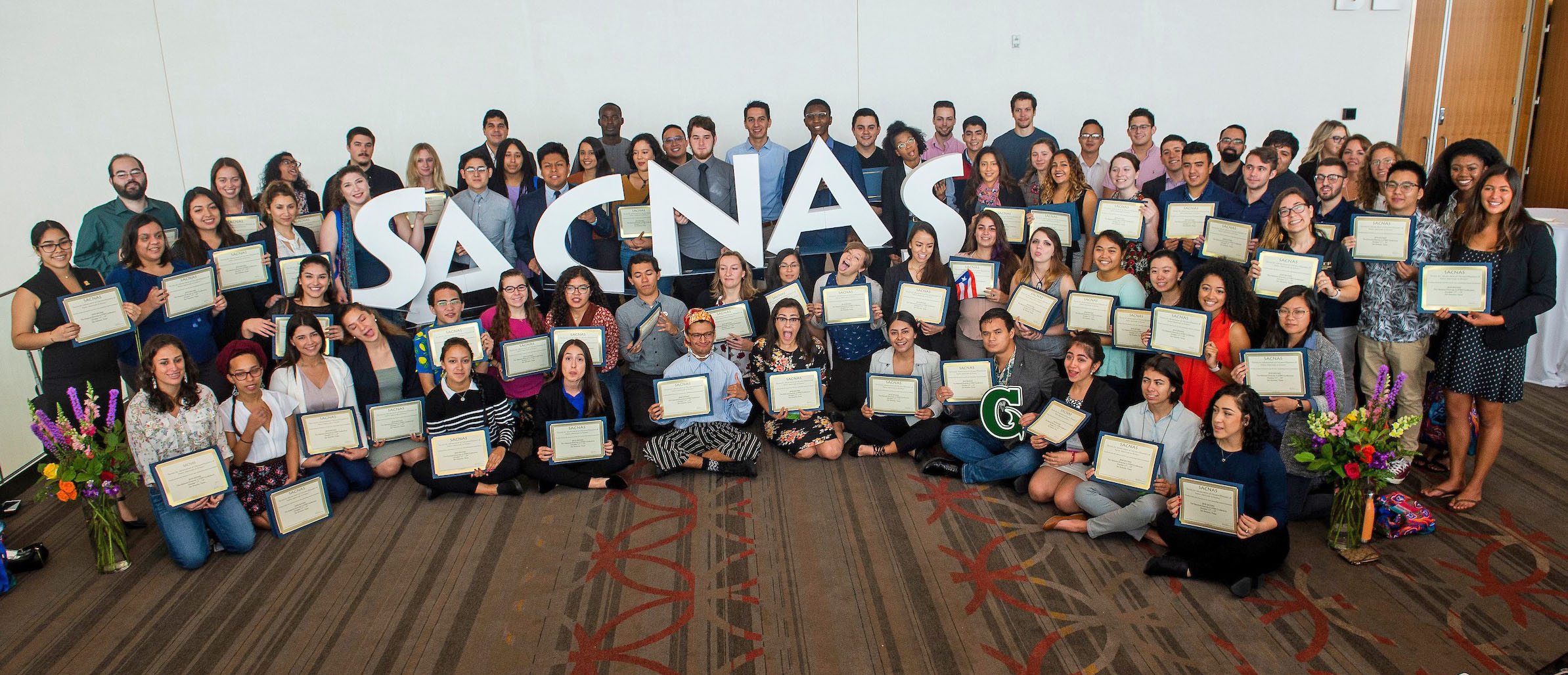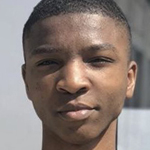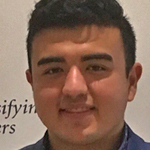SACNAS Recognizes HMC Researchers
November 5, 2018
Harvey Mudd College students Rex Asabor ’22 and Luis Martinez ’19 were among 105 students who received Student Presentation Awards for their research at the 2018 Society for Advancement of Chicanos/Hispanics and Native Americans in Science (SACNAS) national conference in San Antonio, Texas, in October. Their work was selected from over 1,000 graduate and undergraduate student research presentations from 300 U.S. colleges and universities.
SACNAS is a society of scientists dedicated to fostering the success of Chicano/Hispanic and Native American scientists—from college students to professionals—to attain advanced degrees, careers, and positions of leadership in science. This year, the National Conference gathered over 4,000 students and professionals, including HMC mathematics professor Dagan Karp, a longtime member of the organization; he received a National Science Foundation grant in 2017 to help enhance the mathematical sciences component of SACNAS conferences.
Asabor and Martinez say they were thrilled to be recognized for the efforts, and both are scheduled to present their work again at separate conferences in early 2019.
Rex Asabor ’22, computer science
 Asabor was recognized at SACNAS for his research in computer and information sciences. SACNAS judges said his work was “a standout among the student presentations” and that his “communication skills and command of the research topic were exemplary.” His paper, “An Algorithm to Predict Feature-Based Gene Equivalence Between Mouse Strain Genomes,” is the result of research conducted at The Jackson Laboratory for Mammalian Genetics in Maine, where research teams investigate the genetic basis of cancer, diabetes, Alzheimer’s and other human diseases and disorders.
Asabor was recognized at SACNAS for his research in computer and information sciences. SACNAS judges said his work was “a standout among the student presentations” and that his “communication skills and command of the research topic were exemplary.” His paper, “An Algorithm to Predict Feature-Based Gene Equivalence Between Mouse Strain Genomes,” is the result of research conducted at The Jackson Laboratory for Mammalian Genetics in Maine, where research teams investigate the genetic basis of cancer, diabetes, Alzheimer’s and other human diseases and disorders.
He participated in a 10-week summer internship and focused on designing an algorithm to predict gene equivalents in strains of mouse genomes.
“What that means is you take two mouse strains, look through the gene of one strain and find the genes on the other strain with corresponding function,” Asabor says.
Asabor says the award has encouraged him to seek research opportunities during the rest of his time as an undergraduate. Harvey Mudd is anchored by a curriculum that allows students to pursue research during their entire time at the College.
“I was thrilled, especially since it was my first time conducting research, my first time presenting research, and because I was a freshman and almost everyone there was a junior or a senior, so I was even more surprised by that,” Asabor says.
Asabor’s interest in computer science led to the opportunity to conduct research with The Jackson Laboratory. He sees himself pursuing a career in computer software engineering at a large tech company, like Google or Facebook.
In late October, Asabor was selected to present his research from The Jackson Laboratory at the 2019 Asia Pacific Biometrics Conference in Wuhan, China, in January.
Luis Martinez ’19, astrophysics
 Martinez, a physics major, received a SACNAS Student Presentation Award for his research in astrophysics with Jorge Moreno, an assistant professor of physics and astronomy at Pomona College. Martinez’s research, “What Lights up a Galaxy Bridge,” focuses on simulating galaxy merges to gain a better understanding of star formation in galaxy bridges. He started the research project last summer at the Harvard-Smithsonian Center for Astrophysics, and will continue his work through this academic year.
Martinez, a physics major, received a SACNAS Student Presentation Award for his research in astrophysics with Jorge Moreno, an assistant professor of physics and astronomy at Pomona College. Martinez’s research, “What Lights up a Galaxy Bridge,” focuses on simulating galaxy merges to gain a better understanding of star formation in galaxy bridges. He started the research project last summer at the Harvard-Smithsonian Center for Astrophysics, and will continue his work through this academic year.
“We are looking at galaxies and how they merge, but we’re not doing observations, we’re doing computational simulations of merging galaxies, so we’re using large-scale realistic simulations,” Martinez says. “In order to do this, I developed an algorithm that would go through the simulation and identify a bridge. That was part of the project, and then once I did that, I was able to apply the algorithm that I developed to the 27 different simulations.”
“It was really exciting,” Martinez says. “When I present my work, I just get really excited where I’m talking about ‘this is what I found,’ or ‘this is what I was working on all summer’ and being able to share that with other people. Knowing that I was recognized for that and being recognized for something that I enjoy doing, I think was really rewarding.”
Martinez is currently working with Moreno to publish this research, and anticipates publication early next year. He will also be presenting his research at the 233rd Meeting of the American Astronomical Society in Seattle, in January 2019.
Martinez plans to attend graduate school after Harvey Mudd.
“Research, a lot of the time, is wandering and wondering if what you’re doing is correct, but then getting positive feedback from other professional astronomers or astrophysicists and hearing what you did is actually really interesting, I think that’s also very rewarding and validating,” Martinez says.
